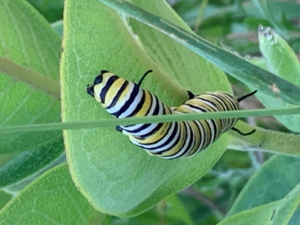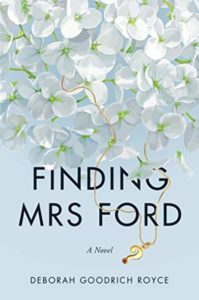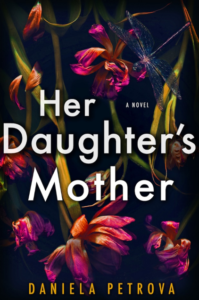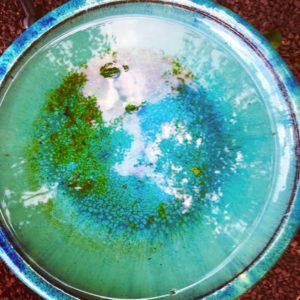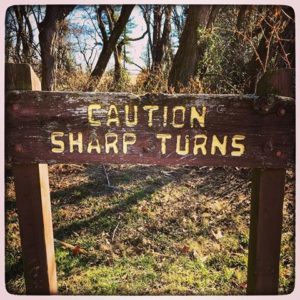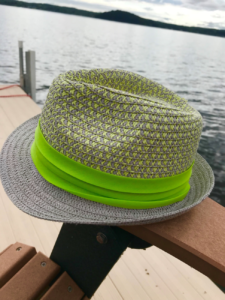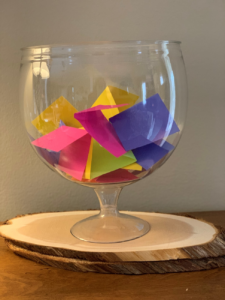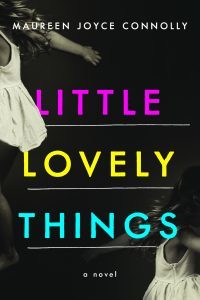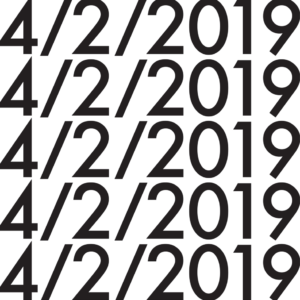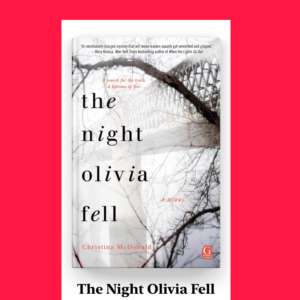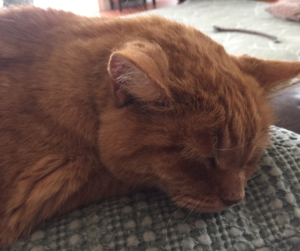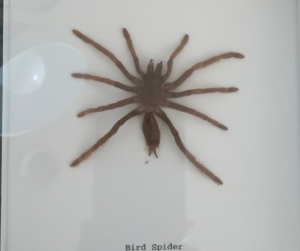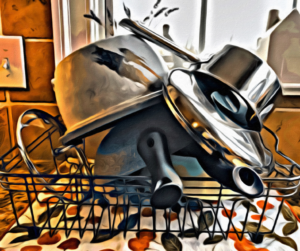Maureen Joyce Connolly's Blog
November 5, 2019
How I Find Inspiration In Monarch Butterflies
I’ve been thinking about monarch butterflies.
Anyone who knows me understands that I am all about inspiration and that I often seek it in the natural world. I am fortunate enough to live near a state park that is rife with lovely old trees, small wildlife, and riffling streams that branch from a main river, the Neshaminy. Lately, during my walks, my mind has been elsewhere.
While visiting northwestern Michigan this past August, we encountered a hot spot in their migratory path and saw entire fields of the caterpillars. I took close to a million pictures and videos of them and simply can’t get them munching away on wild milkweed off my mind.
Butterflies are important in so many ways. Beyond symbols of beauty, they represent the larger story of how our lives cycle through change, often in drastic ways. Monarchs, like their name and devoted lepidopterists (even amateur ones) suggest, are close to perfection in insect form. Majestic in coloring and bearing, they embody the astonishment we feel when we encounter nature at its finest.
Pulsating Masses
Monarchs are a symbol of everything right with the world.
Their life cycle and migratory habits are the stuff of elementary school projects, the kind that kids actually enjoy doing. Did you know that migrating colonies can top fifteen thousand individual insects? I’ve seen this with my own eyes when my family lived for a brief time in northern Michigan.
I awoke one late August morning to find a congregation of monarchs covering the willow in my yard in a pulsing mass of marigold and black. It was almost like a giant tiger had chosen this spot for a long-deserved rest. While I suspect this experience might have partially fueled for the fascination I have for these creatures, I know that I am not the only one who loves and respects them.

A Passion for Poison
Let’s face it, everything about monarchs is just cool – from their ovoid eggs which look like alien landing pods when viewed up close, to the softest emerald chrysalis attached to a milkweed leaf with a spun silk pad. And ah, the larval stage. I think I actually love the caterpillars more than the adults!
These pajama-striped munching wonders consume milkweed by the acre. As a kid, I used to gather milkweed pods by the dozen and offer their downy seeds to the wind. Now, I am careful not to disturb this perennial, as I understand it is the most important food source for monarchs.

More about Milkweed
The wild milkweed is beautiful, but I enjoy its sassy attitude as well. It’s reliably cold-hardy and tough as nails. When it blooms, it attracts local pollinators to its fragrant pink-ish blossoms. But most importantly, when damaged, it exudes a milky white latex that contains a cardiac compound that renders it toxic to most animals.
It is the build-up of this substance in the munching caterpillars which protect the monarchs into their adult life. Their beautiful orange and black markings, so familiar to us, serves as a bell and whistle warning for birds not to eat them. How interesting that the genus is named after Asclepius, the Greek god of healing!

Speaking of pollinators, did you know that monarchs, like all butterflies, are actually important pollinators? As adults they flit among flowers alongside bees and moths, and suck nectar through their super-slim proboscis’, spreading pollen along the way.
Mysterious Souls
It was just over forty years ago when the winter habitat of the monarch butterfly was discovered in Mexico. After searching for decades, it wasn’t until January 1975, when an entomologist at the University of Toronto, Fred A. Urquhart, received a phone call from an American living in Mexico City named Kenneth Brugger, who told him that “We have located the colony. We have found them — millions of monarchs — in evergreens beside a mountain clearing.” (Source: Huffington Post)
Talk about inspiring! Can you imagine coming upon the sight of literally millions of these incredible insects carpeting the landscape as far as the eye can see? For more on this story, I recommend the documentary, On The Wings of The Monarch, which is available for streaming on Amazon. It takes generations for these creatures to make their way back to their southern home – a once-secret place.
I like to believe they arrive with a soulful sigh as if finding solace in the groves of their beloved Oyamel fir trees.

Of all the creatures now endangered, let’s call the monarch what it is – a telltale species, a species that, if lost, unlike so many unseen gastropods, copepods, and other unattractive or easy to overlook creatures, this loss would be catastrophic.
Please learn as much as you can about them. Please leave a patch of wildflowers to grow undisturbed. And above all, please remember that the smallest of things can be inspirational and just the knowledge of their existence can feed our souls.
Connect with Maureen on Twitter, Facebook, LinkedIn, Instagram, or sign up for her newsletter here .
Learn more about her novel Little Lovely Things here. Order your copy now!
Join her Street Team! We’re having so much fun!!

The post How I Find Inspiration In Monarch Butterflies appeared first on Maureen Joyce Connolly.
September 25, 2019
Mindfulness And Self-Care For The Overwhelmed
We all know how important self-care is to our health and stress levels. We hear the mantra all the time from doctors and well-meaning friends. “In an airplane, you’re told to put on your own oxygen mask before you help others. You need to be strong and settled so you can care fully for those around you.”
Sure, it sounds great, but who has time for that? Who can find even five minutes in their busy schedule to breathe?
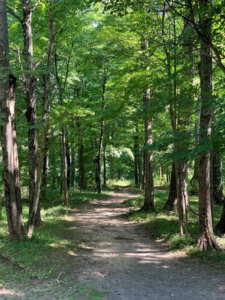
No Time For Self-Care
I found this out for myself when my novel released. If I thought I was busy before that date, I had no idea what was coming. Suddenly my reasonably solitary efforts of writing and editing were replaced by the taxing rounds of marketing and promoting. Plus, of course, I still love writing. And I still have the myriad of other responsibilities of home, family, and life which are just as important.
That leaves little time for me. The core me which is the ship that sails through this tempestuous sea of life.
But as any good captain will tell you, a voyage is only as sound as its ship, and those airline-metaphor friends do actually have a point. If the ship springs a leak, everything else falls into disarray. And when you actually sit down and think about it, the small investments of time for yoga, meditation, and mindfulness really can be worked in even to the busiest of schedules.
That’s the beauty of these nurturing activities. They are fluid. They are amorphous. They are like the ice cream bowl at the end of a meal which somehow finds a way to fit into a seemingly full stomach.
Making The Time
Time does actually exist for these actions. One needs only to desire it. That’s when modest pockets of opportunity present themselves – when we really want something, when we realize it as critical to our health and well-being. It can be a mindful walk with your dog or spending a minute or two simply observing the sky. Recently I began to deep-breathe while standing in line. Adding a piece of fresh ginger to a smoothie is a nice pick-me-up that introduces a little zing into our day.
It’s pretty awe-inspiring that the build-up of small satisfying moments can lead to some big life changes – if you allow it. What’s even more amazing is that time itself, in some sort of Einsteinian Mobius strip, seems to expand and unfold once you integrate mindfulness in your world. There simply seems to be more of it.
Maybe it’s because lower levels of stress hormones provide clearer focus. I get things done more quickly. I move through tasks more efficiently. Drama takes up less time via racing around and losing things. The world clicks into a flow state where good things just happen. The world begins to feel in tune.
Small-Mindfulness
I’m calling this small-mindfulness, and you can be certain it remains a work in progress. But I’ve discovered that the more I not only seek out but actually utilize these opportunities, the more the effort shows its rewards on a daily basis.
It’s not that I’m not lugging around the buckets of stress that accompany a busy schedule, it’s just that I’ve found a way to ease the impact a little.
It’s a voyage of discovery each and every day – and I recommend the journey.

Connect with Maureen on Twitter, Facebook, LinkedIn, Instagram, or sign up for her newsletter here .
Learn more about her novel Little Lovely Things here. Order your copy now!
Join her Street Team! We’re having so much fun!!

The post Mindfulness And Self-Care For The Overwhelmed appeared first on Maureen Joyce Connolly.
August 12, 2019
Review of Finding Mrs. Ford by Deborah Goodrich Royce @royce_deborah
Deborah Goodrich Royce’s debut novel, Finding Mrs. Ford, has become a phenomenon and is being referred to affectionately as simply, Mrs. Ford.
What is it about this book?
Royce’s main character, the Staid Mrs. Ford of Watch Hill, Rhode Island – for those who are unaware, is like a mini-Newport – is in for the ride of her life when one day in 2014, the FBI arrives to question her about her past. The trigger is Mrs. Ford’s relationship with a mysterious man, a Chaldean, who she knew thirty years prior when she lived in the Detroit area in her youth.
Royce takes us places.
Both physically and mentally. From the stately world of the upper crust, to the landscape of suburban Detroit in the late 1970’s, she bridges the yawning gap between privilege and economic decline.
While toggling between two eras, she touches on themes that ring universal such as identity, longing and the magnetic attraction of an unbridled soul. All of which plays out in a page-turning, atmospheric story that keeps the reader guessing to the end.
I will admit, I am biased.
The Detroit she describes parallels much of my own experience, having hailed from that area during the time frame of the book.
But there is something about Royce’s writing, the way she brings you into the direct experience of the characters that keeps the reader – to quote from the book, like a “butterfly pinned to a board” – which is certainly my happy place when buried in a book!
Congratulations to DGR – can’t wait to see what she brings us next!
Find out more about Deborah and her book here: https://deborahgoodrichroyce.com
Connect with Maureen on Twitter, Facebook, LinkedIn, Instagram, or sign up for her newsletter here .
Learn more about her novel Little Lovely Things here. Order your copy now!
Join her Street Team! We’re having so much fun!!

The post Review of Finding Mrs. Ford by Deborah Goodrich Royce @royce_deborah appeared first on Maureen Joyce Connolly.
July 21, 2019
Interview with Author Daniela Petrova
It is my pleasure to present an interview with Daniela Petrova, author of the debut novel, Her Daughter’s Mother, released June 18 by Putnam.
Her Daughter’s Mother is a suspense novel about a woman in her late thirties who has it all—an apartment in Manhattan, a great job as an art curator at the Met, a long-term live-in relationship with a Columbia professor—except they haven’t been able to become pregnant after years of trying. Their last chance is a donor egg cycle they can barely afford. But when he unexpectedly leaves her three days before the precious embryo transfer, she faces the impossible choice of having to give up on her dream of having a baby or proceed without his consent.
Daniela’s bio:
Daniela Petrova grew up behind the Iron Curtain in Sofia, Bulgaria. After the fall of Communism, she moved to New York where she cleaned apartments while taking English classes at the YMCA in the evenings. She is a recipient of an Artist Fellowship in Writing from the Massachusetts Cultural Council. Her work has appeared in anthologies, magazines, and newspapers, including The New York Times, The Washington Post, Salon, and Marie Claire among others. HER DAUGHTER’S MOTHER (Putnam, June 2019) is her first novel. She lives and writes in New York City.
Where did you get the idea for the book?
I struggled with infertility for nearly ten years. I was in the middle of an anonymous egg donor cycle and thought, What if I were to run into my donor? Of course, I would recognize her—I’d seen photos of her—but she wouldn’t know who I was. Would I be tempted to follow her? To learn more about her? The possibility seemed at once exciting and frightening. I knew her health and education history, her hobbies, the eye and hair color of her grandparents. But I had no idea what she was like.
Did she laugh with abandon or shyly cover her mouth? Did she sing in the shower? Did she spend her free time at the gym or curled up on the couch with a book? Hungry to find out more about her, would I be tempted to follow her? I never ran into my donor. I didn’t even get pregnant but I liked the idea of a pregnant woman encountering her donor and stalking her, unable to suppress her curiosity.
Can you tell us more about communist Bulgaria?
I grew up in a poor working-class family in Bulgaria during the Communist era. We were five people in a one-bedroom apartment—my grandparents slept in the kitchen, my mom and I in the bedroom, and my uncle in the living room. I didn’t have a room of my own until I was 18 when my mother and I were finally granted the right to purchase an apartment. We didn’t have central heating and during the winters, we all huddled in the kitchen by the kerosene stove, reading, cooking or knitting.
There were only two TV channels. Programing didn’t start until 5 pm and there were very few shows for children. I waited all week for Sunday when there was one episode of Tom and Jerry or The Pink Panther. So I fell in love with books. I joined the library when I was 7 and never stopped reading.
As a kid, the one thing I craved more than anything else, the greatest delicacy, was bananas. They were available only in the winter and at a limited supply and when word spread that a certain store had bananas, people would line up outside in the snow, waiting for an hour or more. But there was never enough, and half of the people would go back home empty-handed. Till this day, there is nothing more enticing to me than the smell of a banana.
When did you come to the USA?
I came to the US in 1995 at the age of 22, barely speaking any English. I’d dropped out of the university in Sofia in my third year to marry the man I’d fallen in love with two years earlier in Bulgaria. He was an American of Bulgarian origin and worked as the superintendent of a luxury building in New York.
I’d naively thought that I would continue my education in America, but it didn’t take me long to realize that college here was insanely expensive and I wasn’t going to be able to save enough money, working as a cleaning lady and a nanny. I’m indebted to a lot of people who helped steer me in the right direction and eventually I was able to enroll at Columbia and finish college while working full-time at the library there.
How does your background influence your writing?
I’ve explored my childhood in Bulgaria in many of my poems and a few short stories. More and more, I’m writing about my experience as an immigrant in America. My debut novel, Her Daughter’s Mother, explores how as an immigrant, you often feel the importance of your heritage quite deeply and you want to pass it on to your children. Which is why my protagonist, whose last chance of becoming pregnant is a donor egg cycle, wants a Bulgarian egg donor. So that her child would have the genes of her people.
My next novel—also a domestic suspense—delves into the immigrant experience, from the point of view a young Bulgarian woman who comes to New York in the 90s—before social media, Skype and even emails—and finds herself a virtual prisoner to her American husband.

Are your characters based on real people, or do they come from your imagination?
I love fantasizing, making up people and stories. I tried using real people in an earlier novel but I felt restricted by the actual characteristics of the people I’d chosen. They didn’t exactly fit the story and I had trouble manipulating them. So, for Her Daughter’s Mother, I allowed myself to make up the characters.
I wrote character sketches in the beginning, but Lana, Katya, and Tyler didn’t really take shape until I started writing. As narrators, they very much influenced the story. Especially Katya, whose powerful voice surprised me; she took over her own narrative and pushed the story into a direction I hadn’t anticipated.
Can you share something about you most people probably don’t know?
I was once hired by a private investigator to stake out a husband whose wife thought he was cheating.
What are you working on right now?
My second novel, which is also a domestic suspense story that takes place in New York.
Daniela, thank you so much for this interview – wishing you all the best and love your hats! Can you please provide us with a buy link and how we connect with you?
Thank you – it was my pleasure!
BUY LINK
SOCIAL MEDIA
Website: http://www.danielapetrova.com
Facebook: https://www.facebook.com/authordanielapetrova
Twitter: https://twitter.com/danielagpetrova
Instagram: https://www.instagram.com/danielagpetrova/
Goodreads: https://www.goodreads.com/book/show/43063328-her-daughter-s-mother
Thank you for reading this interview and supporting authors!!!
Connect with Maureen on Twitter, Facebook, LinkedIn, Instagram, or sign up for her newsletter here . Learn more about her novel Little Lovely Things here. Order your copy now!
Join my Street Team! We’re having so much fun!!

The post Interview with Author Daniela Petrova appeared first on Maureen Joyce Connolly.
July 14, 2019
Becoming An Author: Reflecting on My Second Act
With the release of my debut novel, Little Lovely Things, I have been a published author for a whopping four months now. Before that, I was a research scientist in the pharmaceutical industry.
Yes, my head is spinning! And yes, it took courage and meant “reinventing myself” – a scary phrase if there ever was one. At the very least, it’s a daunting notion that it implies so much, well, effort. Especially as I am now approaching sixty.
Interestingly, I have not yet attended a book club or book signing event where this concept has not arisen (apparently I clearly look my age!). Questions like “Where did you find the courage so late in life?” (and my favorite, “Where do you summon the energy?”) convey the implication that I’m a doddering zebra among excitable horses.
The truth about my journey to becoming a writer, ahem, later in life is in some respects easier than one might think, and certainly less exotic. Quite simply, my age became my advantage. We’ve all heard the romanticized term, follow your passion. A lovely thought indeed.
But when I was younger I was consumed with the responsibility of raising a family of three children, establishing a consulting business, and, due to my husband’s line of work, relocating our home every eight years – often to different regions of the country.
Parenting, growing a business, finding one’s niche in a new community; these all come with their own form of half-successes, partial joys, and bone grinding effort. It is its own form of sustained courage. I can recall days when every last ounce of energy was expended to keep me from being overwhelmed. My desire to be a writer at that time was back-burnered by necessity.
It wasn’t until my older kids moved on through college and into adulthood, and my career reached a point where I could actually apply focus elsewhere, that I was able to address the burning ember of my passion and coax it into a flame. Yes, that took work. Lots of it.
But I was more experienced at life, at understanding myself. The ups and downs I’d learned my way through helped develop a deep self-knowledge which led to my mid-life epiphany: that if I did not pursue my deepest desire, I would regret it. Forever.
So my takeaway, the key I want all the inquiring minds to know when they approach this zebra with questioning (often young!) faces, is that age is a benefit. Life itself forces the process of self-discovery.
If we listen closely enough to the things we have learned, sometimes simply by default, we will gain the understanding that tells us what we can and cannot tolerate.
For me, it was that I could not leave this one stone – okay, boulder – unturned.
Don’t get me wrong. I do not intend to sugarcoat the effort and courage this endeavor took – it was close to ten long years to complete my manuscript. And then another three before publication. Any serious writer will tell you that it is an ongoing challenge to keep the internal doubts at bay; the fear of being discovered a phony, the fear of not being good enough … the list goes on.
I am able to address these demons because of what life had dished up me long before I became an author.
So color me a hero if you must – and feel free to include those zebra stripes. My own self-opinion is quite different. The risk taken, the courage mustered, all of these things were the result of a lifetime of hard-wrought experience – something we all have in abundance.
Instead of feeling over the hill, why not take advantage of the lessons that hill has taught you? Why not reignite the passion that you’ve hidden from yourself? I promise, from experience, that you are more courageous than you know.
This article originally appeared in Boomer Magazine and is shared here with their generous permission.
Connect with Maureen on Twitter, Facebook, LinkedIn, Instagram, or sign up for her newsletter here . Learn more about her novel Little Lovely Things here. Order your copy now!
Join my Street Team! We’re having so much fun!!

The post Becoming An Author: Reflecting on My Second Act appeared first on Maureen Joyce Connolly.
May 9, 2019
Interview and Review of The Haunting and Dream-Like Naamah by @blakesarah
Sarah Blake’s debut novel, Naamah, is the feminist re-telling of the Biblical story of Noah’s Ark. So I didn’t so much as read Sarah Blake’s debut novel, Naamah, as much as enter into it, one tentative step at a time.
It is a world unto itself and once inside I continued to be drawn deeper as if an incantation had been cast over me. This story is like none other. Told through the perspective of Noah’s wife, we are on the ark after the great flood, and experience the sense of loss and overwhelming responsibility experienced by Namaah as she wrestles with her new reality, which is, in effect, that she is the new Eve.
Haunting and dream-like, we dive into her subconscious and encounter divinity and humanity interwoven in a stew of contradictions. This book is well worth the journey. It will take you places you will contemplate for a long time.
Bravo, Sarah Blake!
Interview with Sarah Blake
Congratulations on the success of your debut novel, which is taking the world by storm! Thank you for agreeing to do this interview!
Thank you for having me!
1. I assume things have been a whirlwind since your book came out. Can you tell us a little about what it is like to live ‘across the pond’ while your book is exploding here?
It’s quiet, for which I’m grateful. But I think it would be quiet, too, if I were in the States. This part of the process, with reviews and such, is so removed from me, and I’m just keeping my head down and working away at my next book.
2. When at your event in Princeton, NJ, I mentioned very quickly a theme in Naamah that caught hold of me – that of betrayal. Can you expound a little more on this?
Betrayal is an interesting thing in this book. The woman in the cave feels betrayed. Sarai feels betrayed. Naamah doesn’t. But leaving Naamah in this position, that of survivor, and also the observer of the betrayal of everyone, leaves Naamah a complete mess.
3. Noah and Naamah have a strong relationship, yet Noah doesn’t appear much in the book. Other than the focus on Naamah, can you tell us why he isn’t more prominent?
I think you’ve said it right there. The book is consumed by Naamah—it’s with her through all her tasks throughout the day, it’s with her when she swims, eats, bathes, and it’s even with her in her dreams when she’s asleep. She’s with the other characters as her path crosses theirs, but I couldn’t predict when that would be or how often.
4. The theme of loss carries us forward as we read Naamah’s story. Where did you find the inspiration for this particular component of the book?
America, as a country, is in a perpetual state of loss right now with its shootings—that’s how it felt to me—the mass shootings, police shootings, school shootings, accidental shootings by young children. Tragedy upon tragedy. And I was writing into that loss.
5. Your writing is ethereal. How much does your poetry background inform your writing and do you have a preference now between novel writing vs poetry?
I’m sure my education in poetry informs all my writing, along with what I read. My preference for what I write depends on how I want to feel. Writing poetry makes me feel like my brain is moving quick, a series of magnets pushing apart and snapping together. Writing fiction makes me feel like I’m sinking deep and moving slow. It’s brought me a sort of calm that I never want to let go of.
6. Naamah’s relationship with the angel is a key component of the story. How did this character originate? In your opinion, why is she important to the story?
She’s inspired by so many of my favorite characters, my favorite angels, from Tony Kushner’s Angels in America to Kevin Smith’s Dogma to television’s Lucifer, which is based on Neil Gaiman’s The Sandman. The angel in my book teaches Naamah, and Naamah teaches her, so much about love and morality, and without the angel, I don’t think Naamah would be ready to speak to God by the end of the book.
Connect with Sarah on her website, Twitter, or Instagram. 
Connect with Maureen on Twitter, Facebook, LinkedIn, Instagram, or sign up for her newsletter here .
Learn more about her novel Little Lovely Things here.
Order your copy now!

Join my newly formed Street Team! We’re having so much fun!!

The post Interview and Review of The Haunting and Dream-Like Naamah by @blakesarah appeared first on Maureen Joyce Connolly.
April 1, 2019
This is The Moment I’ve Worked Toward For 10 Years
It’s here. The launch of my debut novel Little Lovely Things! This is the moment I’ve been working toward for over ten years. If you open your window, you will hear me shouting with joy.

Hear that? It’s me.
I have previously written about holding the first advanced reader copy of my book, and how it was, in some ways, like cradling a baby before it was actually born. Now that baby has arrived! And while it has taken an enormous amount of time, I have nothing but gratitude for what I have learned during this journey, for the people I have met and grown close to, and how I now understand that creativity can truly be a force for change.
Meandering Moments
Based on the meandering path of my life these past ten years, this book should’ve never been written. Along with a busy career and family demands, which included relocating to different geographic areas twice, as well as putting two kids through college while ushering a third through elementary school and on to high school graduation, I somehow found time to write. And write. And keep writing.
I think of Claire, my protagonist in how she and all of my characters learn to fight for happiness in LITTLE LOVELY THINGS. Claire, although fictional, often comes to mind when I experience difficulty and need to channel her strength and resilience. I know that along with friends, family, and colleagues that have supported me along the way, she’d be thrilled that I am able to achieve my goal of writing and publishing a book.
In retrospect, I see how impossible it all was. Dauntingly impossible. I laugh now at some of the strategies I employed in order to keep focus on the big picture, especially when the end game seemed so far away.
Do you remember the Tom Sawyer story, where he made the chore of painting Aunt Polly’s fence so irresistible to the boys strolling by, of him lounging in the shade of an enormous tree, a gap-toothed grin visible under a straw hat, as a group of his friends toiled to whitewash Aunt Polly’s fence in the hot sun?
In many ways, I learned to use my creative right brain to fool my rational left side into writing when it was resistant. Think Aunt Polly after assigning what she knew was almost an impossibly huge task for mischievous and restless Tom. Now imagine this fence the size of, oh, let’s say the Great Wall of China.
I’ve never been to see it but I heard it’s visible from the moon which is proof enough to me that it’s a pretty daunting feat of engineering. This is how the left side of my brain viewed writing a novel. The only applicable word I can scare up is monstrous.
Moments of Focus
So, I learned to play tricks. On myself. Little things that over time added up. I fed colored paper into my printer using the ROYGBIV pattern, promising myself that if I stuck with it, I would end up with something surprisingly cool. And sure enough, after stacking a few draft chapters together, I had a rainbow when viewed from the side.
Using oversized sheets taped together, I traced character arcs and stuck them to my office walls. As my characters developed, they climbed up toward the ceiling above the windows and took a dramatic turn at the door. This mess was intriguing enough to keep my brain moving the story forward even as I was busy working the problems associated with my consulting business.
There were many long breaks in my writing schedule due to the necessity of life events. Resuming where I left off was always a daunting challenge. I heard a stentorian internal voice urging me to throw in the towel. This is when I developed my version of writer’s bingo. I grabbed some scissors and cut a bunch of my rainbow paper into strips.
I then wrote a question on each one – about plot or characters or anything related to the story. After folding, I placed them into a jar. When it was time, I reached in and grabbed my writing assignment for the day. The little prompts that felt like a bingo prize grab were fun enough to keep me going and the whole damn thing felt like a celebration in my office.
The self-trickery, the love of those surrounding me, along with a deep desire for self-expression; these were all ingredients that lead to this important milestone in my life.
The Moment is Here!
The mixture of emotions I am currently feeling veers from astonishment to gratitude to pure joy. While you probably can’t hear me shouting, I’m sure you are able to relate to the silly internal grin I’m carrying in my heart.
How about you – can you share a goal in your life that seemed difficult to attain and yet you found a creative way to achieve it?
Note: LITTLE LOVELY THINGS is being released April 2, 2019, and is available wherever books are sold.
Connect with Maureen on Twitter, Facebook, LinkedIn, Instagram, or sign up for her newsletter here .
Learn more about her novel Little Lovely Things here.
Order your copy now!

Join my newly formed Street Team! We’re having so much fun!!

The post This is The Moment I’ve Worked Toward For 10 Years appeared first on Maureen Joyce Connolly.
March 24, 2019
This Is How I Compare My Publishing Journey To Plants
With the launch date of my debut novel, Little Lovely Things, just around the corner, I have been reflecting on the process it took to write my novel, along with the appropriateness of the timing of my book release.
April 2nd – early spring, warm weather, planting season. I love plants. Always have and probably always will. From their often tiny beginnings – have you ever seen poppy seeds? – to the mature architecture of a towering maple, they fascinate me on many different levels.
I garden in Pennsylvania and my main focus is perennials. They die back protectively when harsh weather approaches and then pop to life again – often even stronger – in the spring. In short, they are persistent, and in many ways represent the journey I have taken to publication.

Waiting for warm weather!
Similar to seeds, a grain of an idea for a story persisted in my mind. In this early phase, which no doubt existed in some primordial place in my brain, glimmers of plot slowly began to emerge, along with the low murmur of my characters calling. The notion of theme was tangled and delicate like microfilaments in the soil. Bigger picture things like story arc, plot and character development, were incubating, waiting for the right moment to emerge.
When seeds are watered and the conditions just right, the embryo inside swells and splits the outer coat. In other words, it can no longer be contained. This happened with me, after dabbling at writing scenes and day-dreaming about character interactions, I finally crossed an energy bridge. I made a clear definable commitment to myself to see this simmering story idea fleshed out into a completed novel.
The exact trigger was when I gave myself permission to believe that I was indeed courageous enough not only to attempt to complete a novel but also to obtain a literary agent and mainstream publisher. Which I did!
Have you seen when plants begin to sprout? They are all pale green spindly leaves, kind of like a gawky adolescent. But the leaves go to work immediately and are absolutely integral to the life of the young plant. Essentially, mini-factories, they gobble up sun and generate the fuel for the growing seedling.
I don’t know about you, but this smacks of inspiration to me. To keep at the grinding task of writing a full-length novel, I needed lots of plain old stick-with-it initiative for certain, but my novel would have stalled without inspiration. I’m not talking about a lightning strike moment, I am talking about harvesting a constant flow of creative energy from somewhere outside myself, from what I believe is a higher place.
This is when my characters became vibrant and chapters fell into place, as if urging the story forward. At this point, it would’ve been impossible for me to abandon my work.
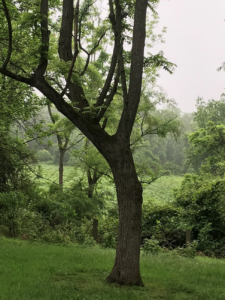
And just like the trunks and root system of trees, my writing required years of development. It was a time of quiet learning and experimenting, of nurturing my subconscious to the forefront and learning to interpret the messages it was offering. This is when I was able to truly delve into the deeper motivation behind my characters’ actions as well as determine the plausibility of events based on their personalities.
By learning to listen to my internal voice rather than critical input from outsiders, I grew stronger and developed the scaffolding of a process which informed my approach as to whether my writing required the rigidity of wood versus the flexibility of a vine.

I know that authors don’t resort to the combat tactics of plants to seduce an audience; irresistible scents, oozing nectar, and – unabashedly exposed sex parts (also known as flowers), but writers do their darndest to attract people – think colorful artwork on covers, blurbs by other authors prominently displayed.
Because the simple truth is that authors do not feel complete without readers. Plants need pollinators to continue their species; writers need an engaged audience to stay motivated.

While all plants are for certain, miracles, I leave you with the lowly corn plant. As a crop, it nurtures our body in the way that reading and literature is food for our soul. The next time you drive past a cornfield in the summer stop and get out. Select a single stalk from the thousands and approach. Notice the leaves harvesting the sun in a gesture of open-palmed wonder.
And then drop to your knees. Yes, there is an unseen network of roots beneath the soil, anchoring the plant in place, providing nutrients and water. But a few inches higher on the stem, you will find strange emanations which look like gnarled digits reaching downward into the dirt, as if the very fingers of God are holding these plants fast to earth. These are called prop roots and add stability to these thin plants – similar to buttresses on the sides of skyscrapers.
Like those strange extra roots shooting from the stem, I too developed a secondary support system. And in the same manner that corn plants are held fast in high winds, over the course of my writing journey, I learned to develop a way to eschew criticism and maintain focus.
And now, with a solid foundation for my writing, I am a very-soon-to-be published author.
Connect with Maureen on Twitter, Facebook, LinkedIn, Instagram, or sign up for her newsletter here . Learn more about her upcoming novel Little Lovely Things here.
Pre-order your copy now!

Join my newly formed Street Team! We’re having so much fun!!

The post This Is How I Compare My Publishing Journey To Plants appeared first on Maureen Joyce Connolly.
March 7, 2019
Interview with Christina McDonald, author of The Night Olivia Fell
Christina and I are colleagues in the 2019 Debut Authors Group, a stellar bunch of writers (if I may say so myself!). Christina is a delight – you can tell by her lovely author picture. Her suspense novel, The Night Olivia Fell, was released in February to rave reviews. I found it a true pleasure to read while balancing on the edge of my seat. I know how busy Christina currently is and so am truly grateful that she agreed to take the time to answer the following questions.
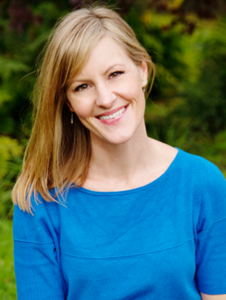
1. Congratulations on the success of The Night Olivia Fell! Are you in any way surprised by how well received it is? Did this differ from what your expectations were as a debut novelist?
Thank you so much! I mean, you always hope your book that you’ve slaved away on for years will be well received, but when it happens it’s still a bit surprising. I think it’s all still so new to me! But it’s wonderful and exciting and I’m so, so grateful that readers are enjoying The Night Olivia Fell.
2. The premise for The Night Oliva Fell is so different, where did the idea come from for your plot structure?
About five and a half years ago I’d had a new baby and was rocking him to sleep reading the news on my phone. I read a story about a 13-year old girl in California named Jahi McMath who had gone into surgery to have her tonsils removed, suffered massive blood loss, and ultimately was declared brain dead.
I looked at my baby utterly horrified and thought about Jahi’s mother, how devastating it would be to hold your child in your arms, watch her take her first steps, go to sleepovers, become a teenager, and have her be so savagely ripped away. It’s every parent’s worst nightmare. I started thinking ‘what if’. What if she was a teenager, what if she was pregnant, what if her mother thought she’d been murdered. So from that news story, the seeds of The Night Olivia Fell were planted.
3. One of the things I found most compelling about The Night Oliva Fell is the relationship between Abi and Olivia – mother and daughter. Can you elaborate on what inspired you to develop this?
I knew as soon as I sat down to write this, in fact as soon as the idea for it occurred, that it would be a story about a mother and daughter, told from each of their different perspectives. I think the mother-daughter relationship is so complex and so unique, and I really wanted to explore that more. Plus, I thought it would be great to have the different POVs so that the reader would be able to really get inside each of their heads and know what they were thinking and why they acted the way they did.
Abi and Olivia have a really special relationship because in many ways Olivia feels she has to take care of Abi, while Abi, as the mother, has always just done her best to take care of Olivia. My mother was a single mom, and I think a lot of the way Abi thinks is inspired from that, and maybe even some of the way Olivia wants to care for her mom.
4. You are coming out with a new book soon. Can you tell us a little about it?
Yes, I have a new book in the works! It is currently tentatively called All That Is Broken and it will be out Feb 2020. It’s about a woman who is struck by lightning and wakes up in the hospital unable to remember if she murdered her mom. This book again has a mother/daughter protagonist but explores themes of identity, trust—of ourselves and others—and the secrets that families keep.
Here’s the full synopsis – https://christina-mcdonald.com/all-that-is-broken/

5. How long did it take you to write The Night Olivia Fell and did you work on it full time?
Writing the first draft only took me a few months, but I did (what felt like!) hundreds of revisions. I was working full-time and I had two young children so every spare minute in the evenings after they were in bed or snippets of time at the weekends that I could write, I did. I then revised loads before sending it to an agent, revised loads more before she sent it to an editor, revised some more, and then it became an actual book. It’s a very long process!
6. What advice would you give other debut authors who have not yet published their books (for example, me!)?
Don’t give up and don’t get dejected. This is a hard game and a long one and if you get distracted it can all end really fast! It’s easy to get caught up in the star reviews or the blogger’s comments or the sales numbers, but it’s important not to otherwise we won’t make it to book 2 or even 3. Try to ignore all that stuff, stay focused and write the next book, and the next one, and the one after.
7. Do you have a passion or hobby that you do in your free time?
My biggest passion, unsurprisingly, is reading. I’m a massive bookworm and read constantly. In fact, I rarely ever watch TV, I just read. I love lifting weights at my gym, but I hate running. I also love walks in the park with my dog and my family.
8. How can readers learn more about you and your work?
I have a book club where I do book giveaways and write bits of information about me and chat books on my website. https://christina-mcdonald.com/
If they want to make sure they get notified of book sales or new releases, they can follow me on BookBub – https://www.bookbub.com/profile/christina-mcdonald
Christina, I so appreciate you taking the time for this interview. If there is any additional information you wish to provide, please feel free. And a massive congratulations on your success!
My social channels
FB – https://www.facebook.com/christinamcdonaldauthor/
Twitter – https://twitter.com/Christinamac79/
Instagram – https://www.instagram.com/christinamac79/
Thank you so much, and best of luck when your book comes out! It’s such a wonderful feeling!
Connect with Maureen on Twitter, Facebook, LinkedIn, Instagram, or sign up for her newsletter here . Learn more about her upcoming novel Little Lovely Things here.
Pre-order your copy now!

Join my newly formed Street Team! We’re having so much fun!!

The post Interview with Christina McDonald, author of The Night Olivia Fell appeared first on Maureen Joyce Connolly.
February 20, 2019
This Is What To Do When Bad Things Sprout Legs
I had something crappy happen to me recently. On a scale of bad stuff it falls smack in the middle – not earth-shattering, but certainly earth-rattling.
When the news arrived, I immediately: discovered all the ways that the crappy thing was somehow my fault, thereby stoking that ugly voice inside to remind me that I truly am unlovable. Once that was accomplished, I then logged onto Goodreads and ignoring the positive reviews that the advanced reader copy of my novel, LITTLE LOVELY THINGS, has received, I honed in on the specifically not-so-flattering ones, thereby confirming that I am indeed a terrible writer.
I even went out of my way to take offense at my thirteen-year-old cat napping indifferently at my plight.
Once all that was accomplished, I made certain this percolated in my head along with some choice miserable moments from my childhood and the reminder that my after-Christmas holiday five pounds was lingering even longer this year.
This nasty brew of thoughts basically constitutes a finely designed search and destroy mission aimed at my self-esteem.
Keep in mind I said that this was my immediate reaction.
My Love Of Creatures With Legs (Well, Most)
I love creatures. I’m also a huge Sy Montgomery fan, who if you are not familiar, writes about creatures lovingly. I took entomology in college. As an elective. Insects are, if nothing else, fascinating. But spiders are a whole ‘nother thing. Let me repeat that. Spiders are simply horrible. Don’t try to tell me they look like insects. Not buying it. If my arachnophobia ties back to a repressed early childhood memory of some sort – then so be it. I am not interested in resurrecting any part of it.
Spiders. If only they didn’t have THOSE LEGS. They would just be immobile blobs of hair.
Still disgusting, but pretty much impotent. It’s the weird way their bodies suspend threateningly between their eight knobby-kneed legs that creep me out. How they live on the edge of darkness, skittering in and out of my periphery as I reach for the basement light switch. Or worse, hang out in the ceiling over my head, noticeable only when I’m about to fall asleep. You get the picture.
How do spiders tie back to the bad thing that happened to me? I’m a metaphorical thinker, and here’s what I’ve learned about myself: it’s super easy for me to take an unfortunate situation, which sits in the center of my mind like a hairy glob of unsightliness, and give it legs. Legs, of course, provide it with the mobility to seek out the dark corners of my imagination and breed or do whatever disgusting thing it chooses.
In other words, I’ve lost control. There’s a name for it. It is called, catastrophizing.
How Creatures With Legs And Bad Things Tie Together
But, drumroll: this is actually going someplace positive. Remember when I said that was my initial instinct, my first response? It took much heartache and unnecessary anxiety for me to realize that I could, in fact, do something about this.
After being chased around by so many imaginary monsters I began to realize that I was the one to placed legs on them. This was a sheer revelation. I could, in fact, try to create a view of the positive outcome, even when things seemed most difficult. It was a way to use my imagination in the opposite way of catastrophizing.
If this is a simple notion for you – then blessings your way – because it was a total revelation for me.
There are all kinds of techniques to draw on: visualizing, deep breathing, seeking out positive examples of when things actually did work out – and I urge you to find the mode that best suits your temperament. The bottom line is this; realizing that we actually do have a modicum of control in the way we react to problems, is itself earth-rattling, but in a good way. That we can choose whether to make the circumstance worse – to in effect, give it legs or not – is a powerful tool.
I am in no way diminishing the effect of bad things that happen. Nor am I saying that with the proper mindset, you can just wish them away. But I do mean, there might just be a path forward to work toward, whether it right be a smacking full-frontal confrontation with your monster or a convoluted mapping around it.
Either way, be certain that piling on the drama, like blaming yourself for everything or convincing yourself it was all your fault, or whatever, just makes everything more difficult.
We all know people like that – the dramatics – creating tarantulas everywhere. As a writer, I’m a pretty good observer of human behavior. And what I noticed is that dramatics not only make every little thing more difficult for themselves but also, more importantly, for everyone around them as well. If you are prone to this: take stock. It will improve your relationships if you can do a mental stop, drop and roll before knee-jerk reacting and creating an unnecessary hullabaloo.
Figuring Out What Matters
Little things matter. Like domestic duties. I love to cook but despise clean-up (I know, it sounds spoiled, but my mother was the same way – at least the clean-up part, and I can’t help what’s in my DNA). Given enough after meal mess, I can easily grow the situation in my head from mite-sized spiders into orb weavers in a matter of minutes.
Because, as I said this is genetic and not my fault, I invented some house rules to avoid it. I never buy nor do I allow anything kitchen-y like utensils, serving platters, etc., if it can’t go in the dishwasher. Keep your Aunt May’s fancy chip bowl for your own house. I can grow really unpleasant and whiney if I am left to scraping and soaking and hand-drying stuff that is too fancy for a dishwasher. Besides, dishwashers are much more thorough and hygienic than I am. (Can’t tell you how many times this has gotten me out of clean-up up at other people’s homes.)
This is not just a silly example. Managing small circumstances helps prepare for when the earth-rattling things do happen, which is inevitable. If you can handle the day to day irritations and setbacks with perspective, you will be far better prepared to weather the big stuff that comes your way.
And for goodness sake, keep in mind that it’s okay to react poorly at first. It’s all part of the process. I allow myself to cycle through all the bad ju-ju just as a warm-up sometimes, or as a reminder of how I used to react. I then find myself actually grateful for how far I’ve evolved emotionally.
The key is recognize what your brain is up to, and commit to stop adding any more legs to that monster.
If you do create a creepy crawlies or two, know that you have the power to undo the additional burden you may have placed on yourself. Your situation won’t be perfect. But it may be tolerable.
Update on my stuff – it fluctuates. Right now it’s down to a two-legger, which means, sorry to be graphic, that it still manages some flopping and thumping. While the attempted movement is mostly ineffective, it still gives me the creeps. Ugh.
But it is far better than scurrying in and out of dark reaches of my mind, and that, my friend, is progress!
Connect with Maureen on Twitter, Facebook, LinkedIn, Instagram, or sign up for her newsletter here . Learn more about her upcoming novel Little Lovely Things here.
Pre-order your copy now!
Join my newly formed Street Team! We’re having so much fun!!

The post This Is What To Do When Bad Things Sprout Legs appeared first on Maureen Joyce Connolly.

